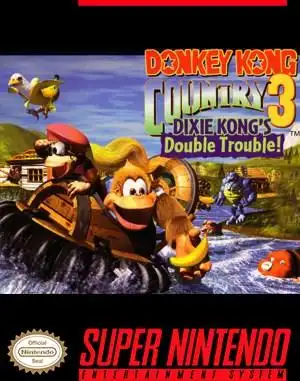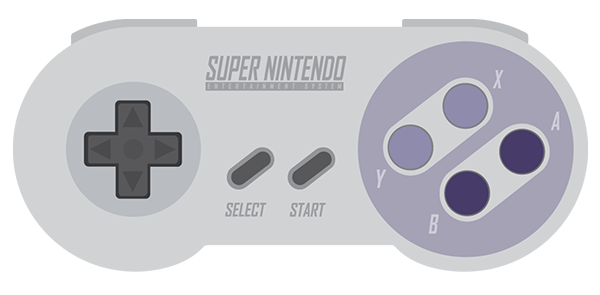Stepping back into the world of the Super Nintendo Entertainment System often brings a flood of memories, and for many, that includes the groundbreaking Donkey Kong Country series. While the first two games are often the most talked about, the third installment, Donkey Kong Country 3 SNES, holds a special place in the hearts of those who ventured into the mysterious Northern Kremisphere. It arrived late in the SNES's life cycle, perhaps overshadowed a bit, but it brought its own unique charm, challenges, and even some surprisingly deep undertones.
Unlike its predecessors, DKC3 swapped out the main stars, placing the capable Dixie Kong in the lead role alongside the surprisingly powerful (and sometimes unwieldy) Kiddy Kong. This shift alone gave the game a distinct feel, forcing players to adapt to a new dynamic duo and their combined abilities.
The Game's Place in the Trilogy
Following the massive success of Donkey Kong Country and the critically acclaimed Donkey Kong Country 2: Diddy's Kong Quest, expectations for a third game were sky-high. Donkey Kong Country 3: Dixie Kong's Double Trouble! delivered more of the stunning pre-rendered 3D graphics and catchy David Wise soundtracks that defined the series. However, it also felt different. The setting moved away from the familiar jungles and pirate coves to a more diverse, sometimes industrial or even polluted landscape.
While some fans felt the level design or character dynamic didn't quite reach the peaks of the second game, DKC3 still offered a robust platforming experience with plenty of secrets, challenging bonus stages, and satisfying boss fights. It was Rareware pushing the SNES hardware to its limits one last time.
Dixie and Kiddy Take the Lead
The decision to bench Donkey and Diddy was certainly bold. Dixie Kong, a fan favorite from DKC2, finally got her time in the spotlight. Her helicopter spin remained invaluable for traversal. Paired with her was the infant Kiddy Kong, whose main talents included:
- Throwing Dixie high into the air.
- Bouncing across water surfaces (a unique mechanic!).
- Smashing through fragile floors.
Controlling Kiddy felt heavier, less agile than Donkey or Diddy, which fundamentally changed how you approached certain platforming challenges. This new partnership, while perhaps less iconic than Diddy and Dixie, offered a fresh gameplay perspective.
Exploring the Northern Kremisphere
The world map of DKC3 was a significant departure. Instead of a linear progression, you navigated a chain of islands and areas connected by various vehicles like the motorboat "Enguarde" (yes, the swordfish!). The environments were incredibly varied:
- Lush forests and mountains
- Grungy factories and sewers
- Stormy lakes and snowy peaks
This diverse array of levels, while sometimes feeling less cohesive than previous games, provided a constant stream of new visual themes and gameplay mechanics. Who can forget navigating treacherous sawmills or bouncing across barrels in a polluted pipeline?
More Than Just Platforming? The Environmental Angle
Looking back at the levels in the Northern Kremisphere, particularly those featuring logging operations ("Ripsaw Ridge") or polluted waterways ("Poisonous Pipeline"), one can't help to notice a recurring theme. While K. Rool (or rather, Baron K. Roolenstein) is the antagonist, the environments themselves often depict the impact of industrialization and neglect on nature.
Could Rareware have been subtly weaving an environmental message into a children's platformer? Levels showing trees being cut down or toxic waste affecting water systems feel remarkably relevant, even today. It's a fascinating interpretation that suggests the game might have been doing more than just providing fun platforming; it could have been prompting players, perhaps subconsciously, to think about the world around them. It's a subtle layer that adds unexpected depth to a classic retro title.
Why DKC3 Still Holds Up Today
Despite being the least celebrated of the original SNES trilogy by some, Donkey Kong Country 3 SNES remains a fantastic game.
- Visuals: The pre-rendered graphics are still impressive and hold a unique charm.
- Music: David Wise's soundtrack, while different from DKC1 & 2, is atmospheric and memorable.
- Gameplay: The core platforming is solid, and the introduction of new animal buddies and mechanics keeps things fresh.
- Secrets: Finding all the bonus levels, DK Coins, and rescuing the Banana Birds provides significant replay value.
It's a challenging game that rewards exploration and mastery of its unique character abilities.
Playing DKC3 Now
Fortunately, experiencing Donkey Kong Country 3 SNES is easier than ever. It's available on the Nintendo Switch Online service for subscribers, allowing a new generation (and nostalgic veterans) to explore the Northern Kremisphere on modern hardware. Of course, original cartridges and emulation remain options for purists.
Conclusion
Donkey Kong Country 3 might have arrived quietly compared to its older siblings, but it was a fitting swan song for the series on the Super Nintendo. With its distinct characters, varied environments, and potentially deeper themes, it's a game that deserves to be revisited and appreciated. It's a reminder of Rareware's mastery on the SNES and a delightful dose of retro gaming goodness.
FAQ
Q: Is Donkey Kong Country 3 a direct sequel to DKC2? A: Yes, it continues the story with Dixie and Kiddy Kong trying to rescue Donkey and Diddy Kong from the new villain, Baron K. Roolenstein.
Q: Are the graphics and music as good as the previous games? A: The pre-rendered graphics technology is consistent with the series, and the music, while composed by David Wise, has a distinct style compared to the first two games. Many fans enjoy it, though it's a matter of personal taste.
Q: Is Kiddy Kong difficult to control? A: Kiddy Kong is heavier and moves differently than Donkey or Diddy, which can take some getting used to. His unique abilities are essential for progression and secrets.


